Complete Solutions to Miscellaneous Examples of chapter LAWS OF MOTION of Class 11 book with complete answers and questions
| Class 11 | PHYSICS |
| Chapter | LAWS OF MOTION |
| DC PANDEY | Miscellaneous Examples |
| Number Of Questions | 9 |
| Academic Year | 2023-24 |
In the odjoining figure, angle of plane `theta` is increased from `0^(@)`to `90^(@)`. Plot force of friction `f` veraus `theta` graph
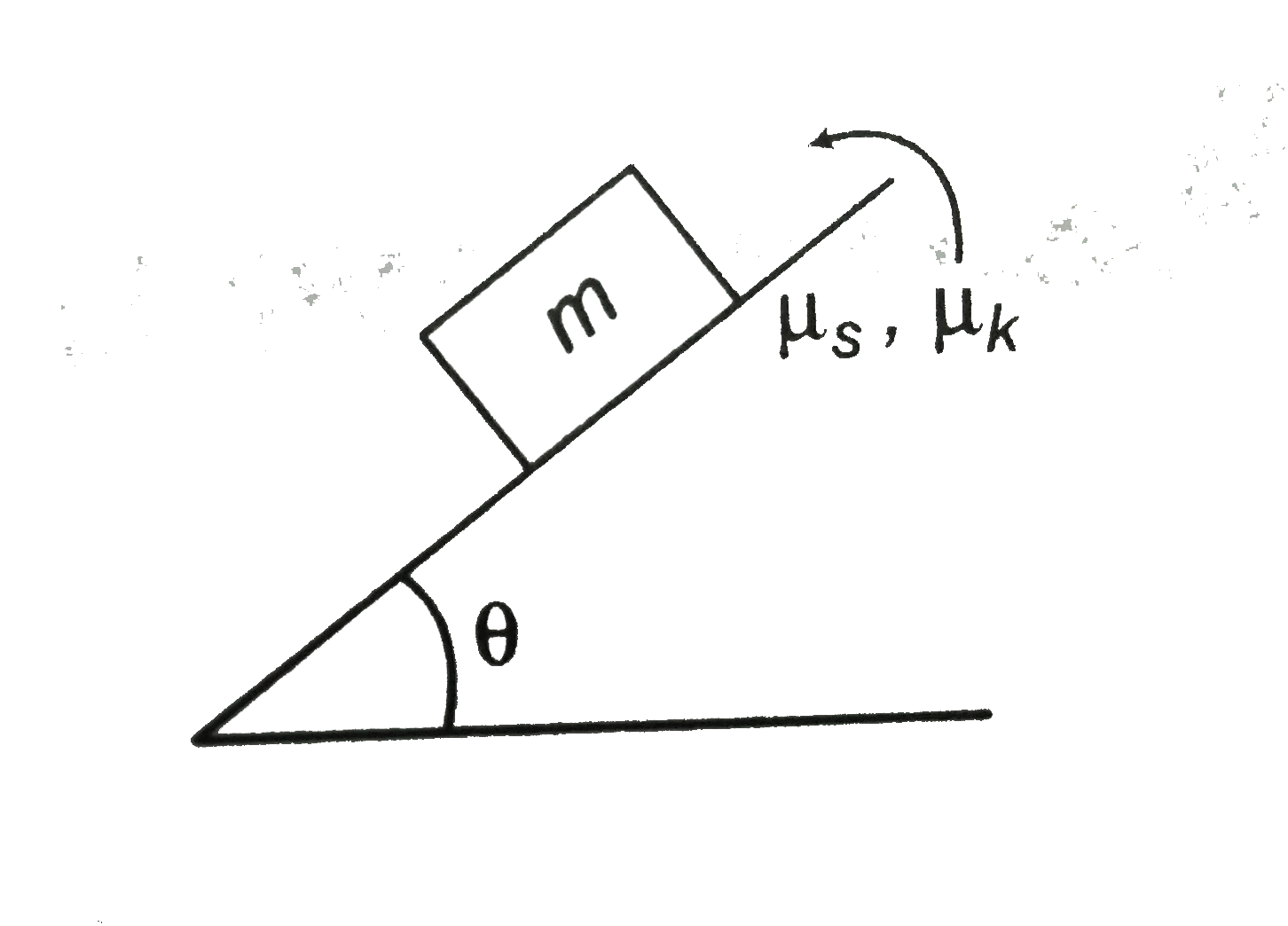
View SolutionFigure shown two blocks in contact sliding down an inclined surfase of inclination `30^(@)`. The friction coefficient between the block of mass `4.0kg` and the incline is `mu _(2) =0.30`. Find the acceleration of `2.0kg` block. `(g = 10m//s^(2))`
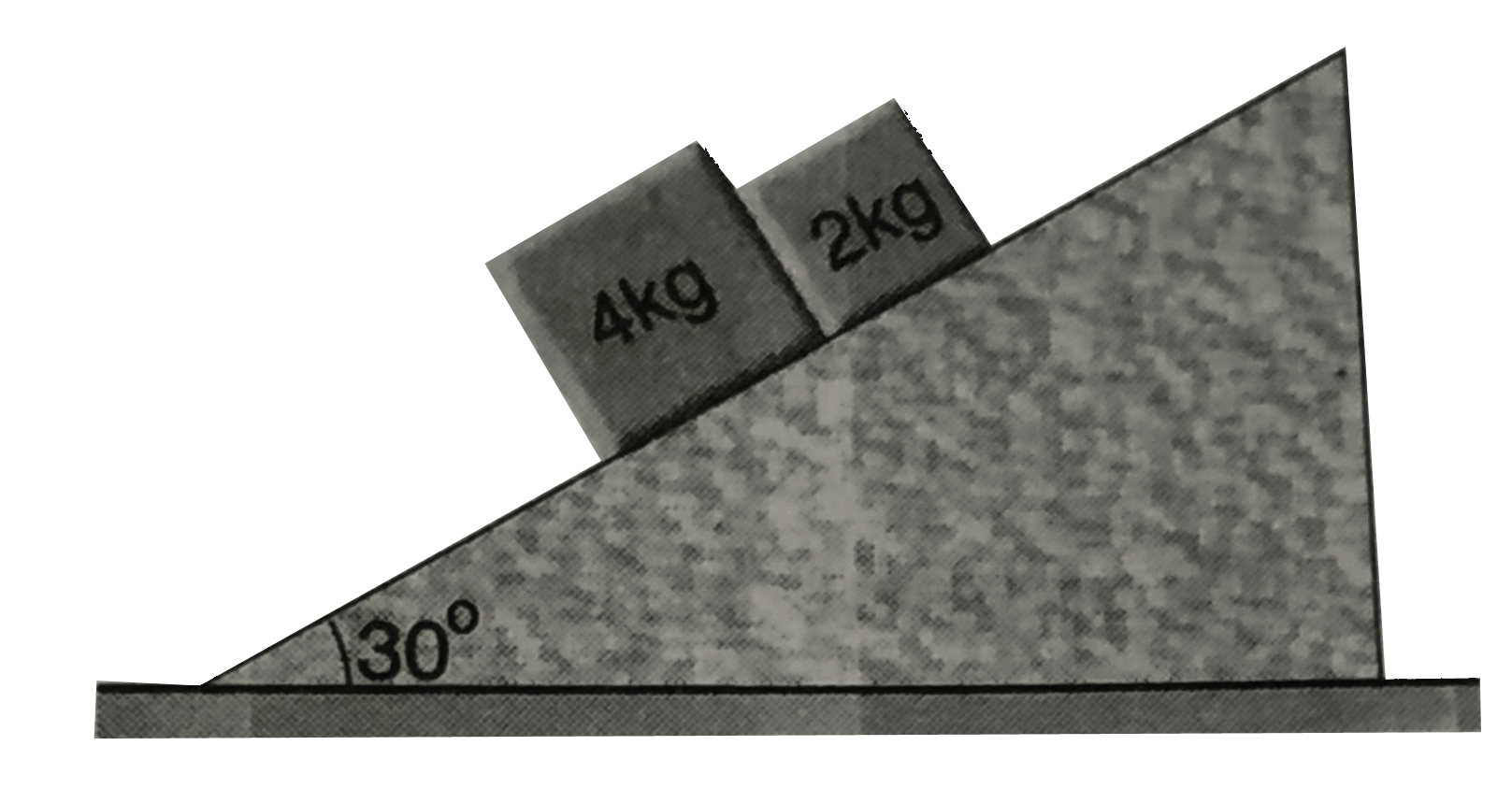
View SolutionFigure shown a man standing stationary with respect to a horizontal converyor belt that is accelerationg with `1m//s^(-2)` . What is the net force on the man?If the coefficient of ststic friction between the man's shoes and the belt is `0.2` upto what maximum acceleration of the belt can the man continue to be stationary relative to the belt? Mass of the man`= 65kg (g =9.8m//s^(2))`
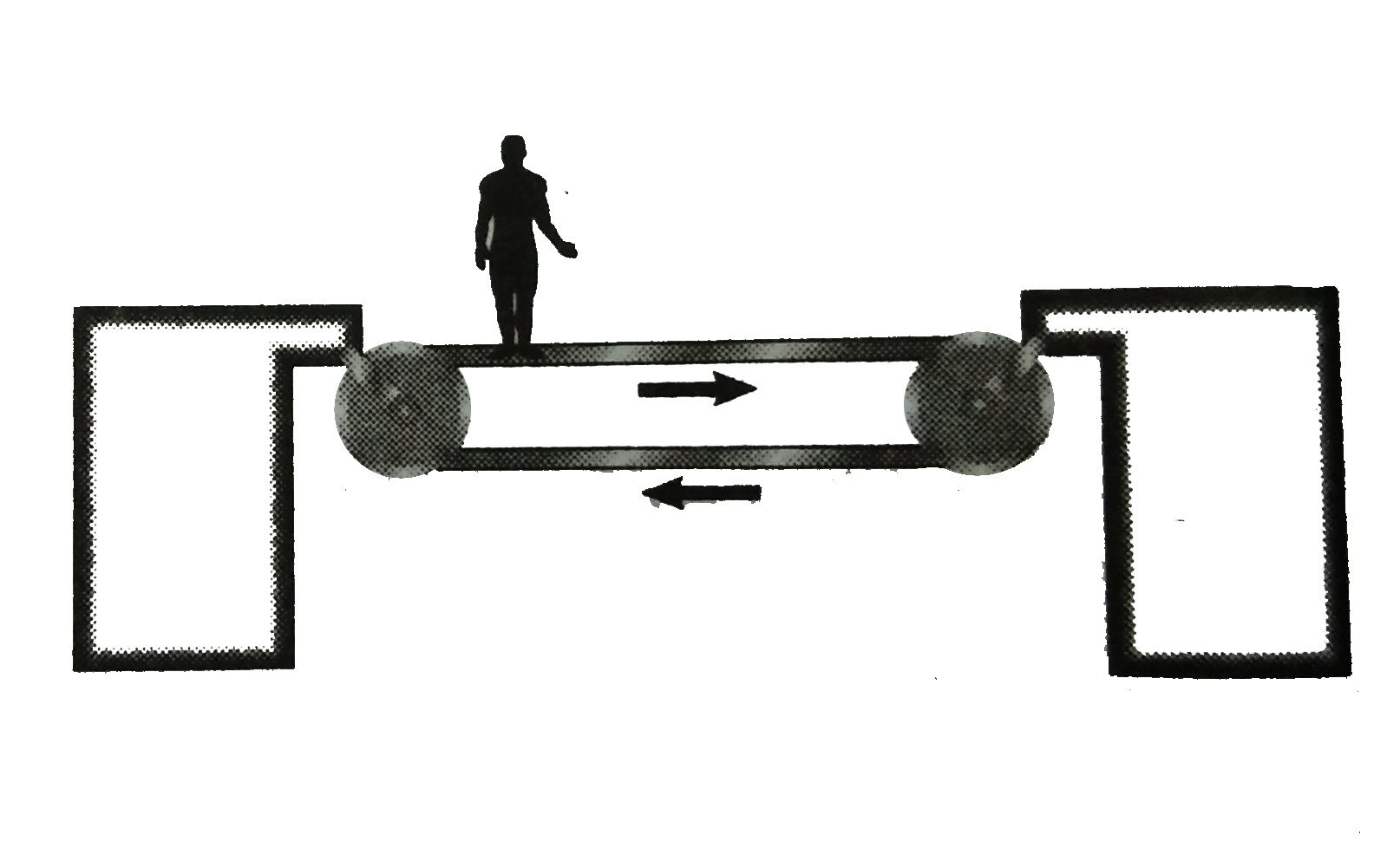
View SolutionTwo block of masses `m =5kg and M =10kg` are connected by a string passing over a pulley `B` as shown. Another string connect the center of pulley `B` to the floor and passes over another pulley `A` as shown. An upwards force `F` is applied at the center of pulley `A`. Both the pulleys are massless.
Find the acceleration of block `m` and `M`, if `F` is
(a) `100N`
`300N`
`500N(Take g = 10m//s^(2))`
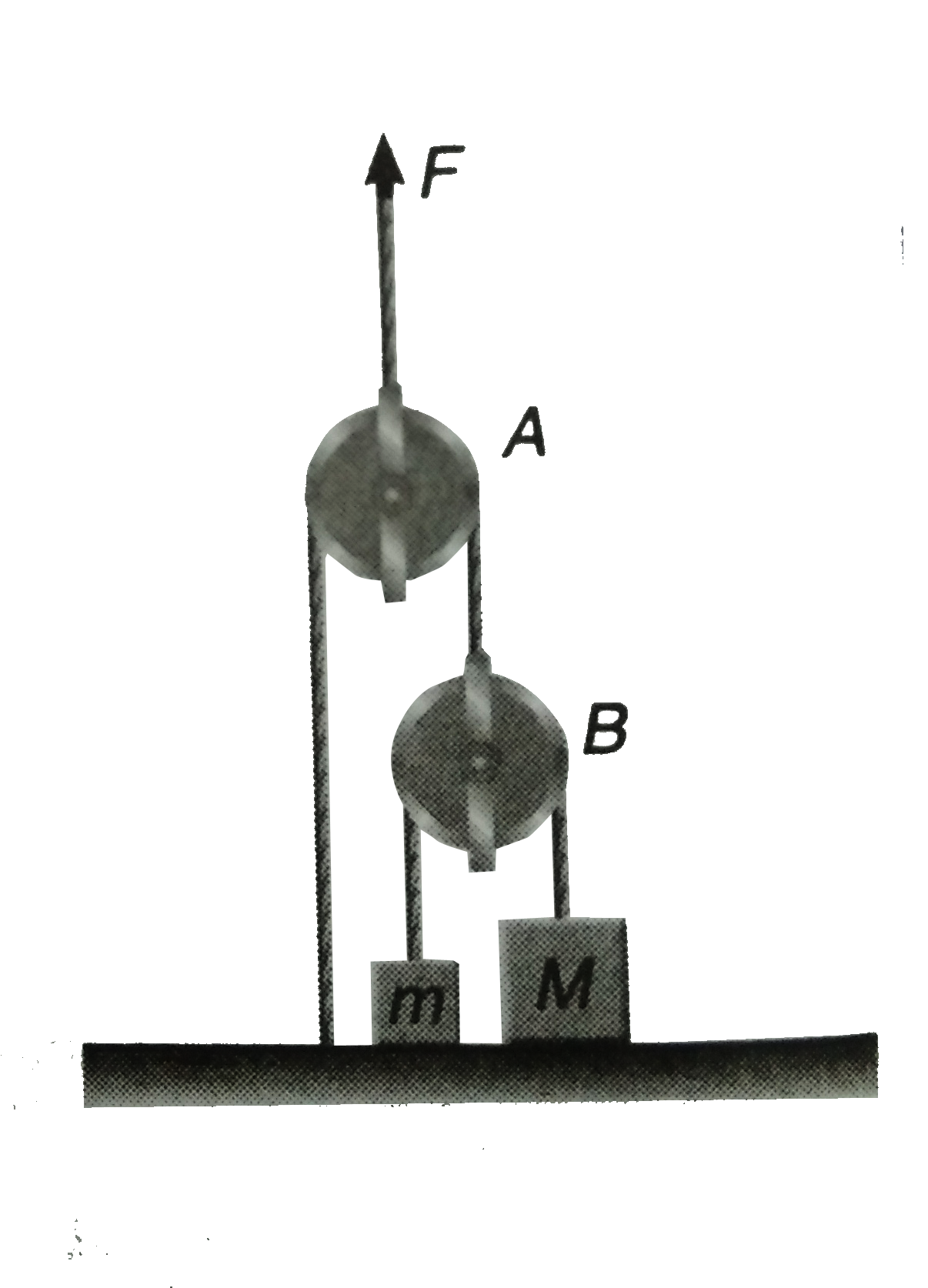
View SolutionConsider the situation shown in figure. The block `B` moves on a frictionless surface ,while the coefficient of friction between `A` and the surface on which it moves is `0.2`. Find the acceleration with which the masses move and also the tension in the strings. `(Take g = 10 m//s^(2))`.
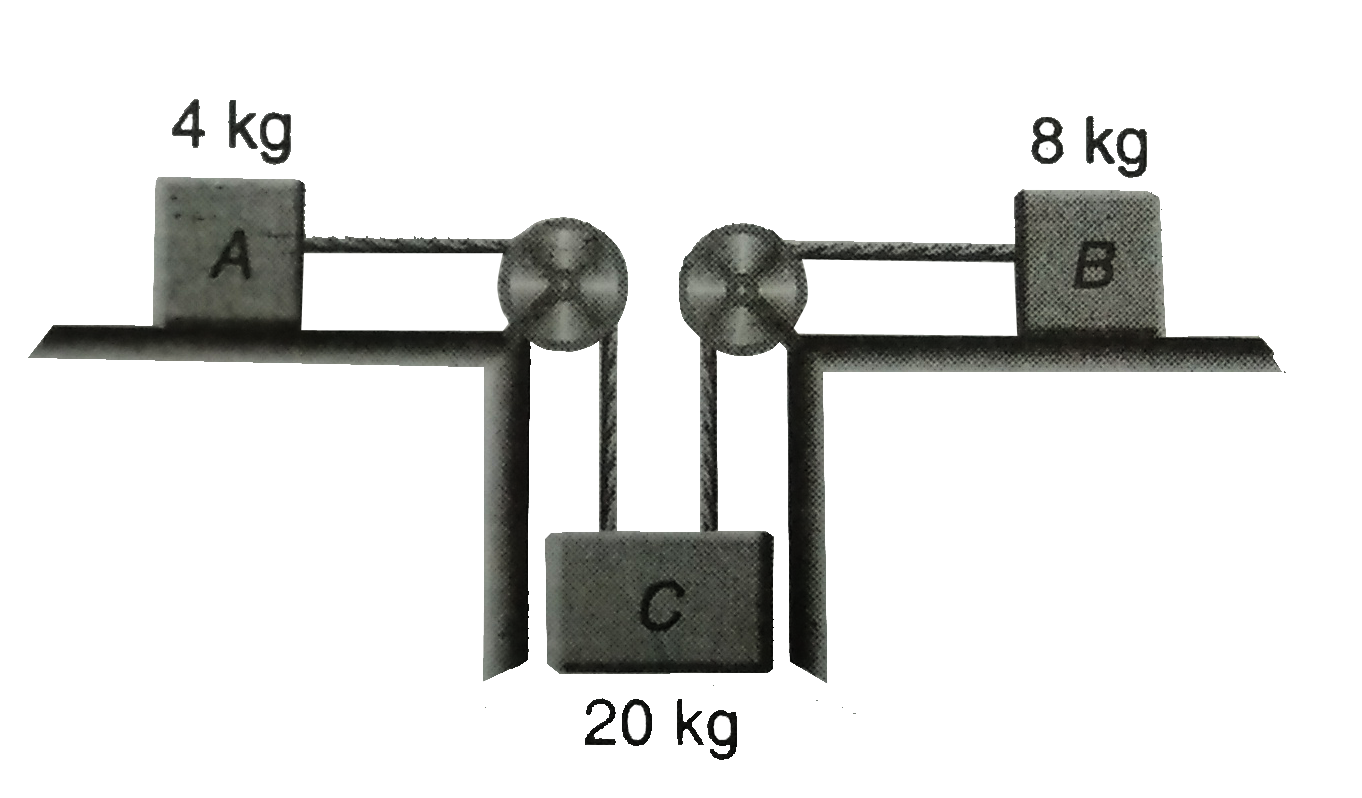
View SolutionTwo block `A` and `B` of masses `1kg` and`2kg` respectively are connected by a string, passing over a light frictionless pulley `B` as shown. Another string connect the center of pulley. Both the blocks are resting on a horizontal floor and the pulley is help such that string remains just taut. At moment `t = 0`, a force `F = 20 t` starts acting on the pully along vertically upwards direction as shown in figure.Calculate
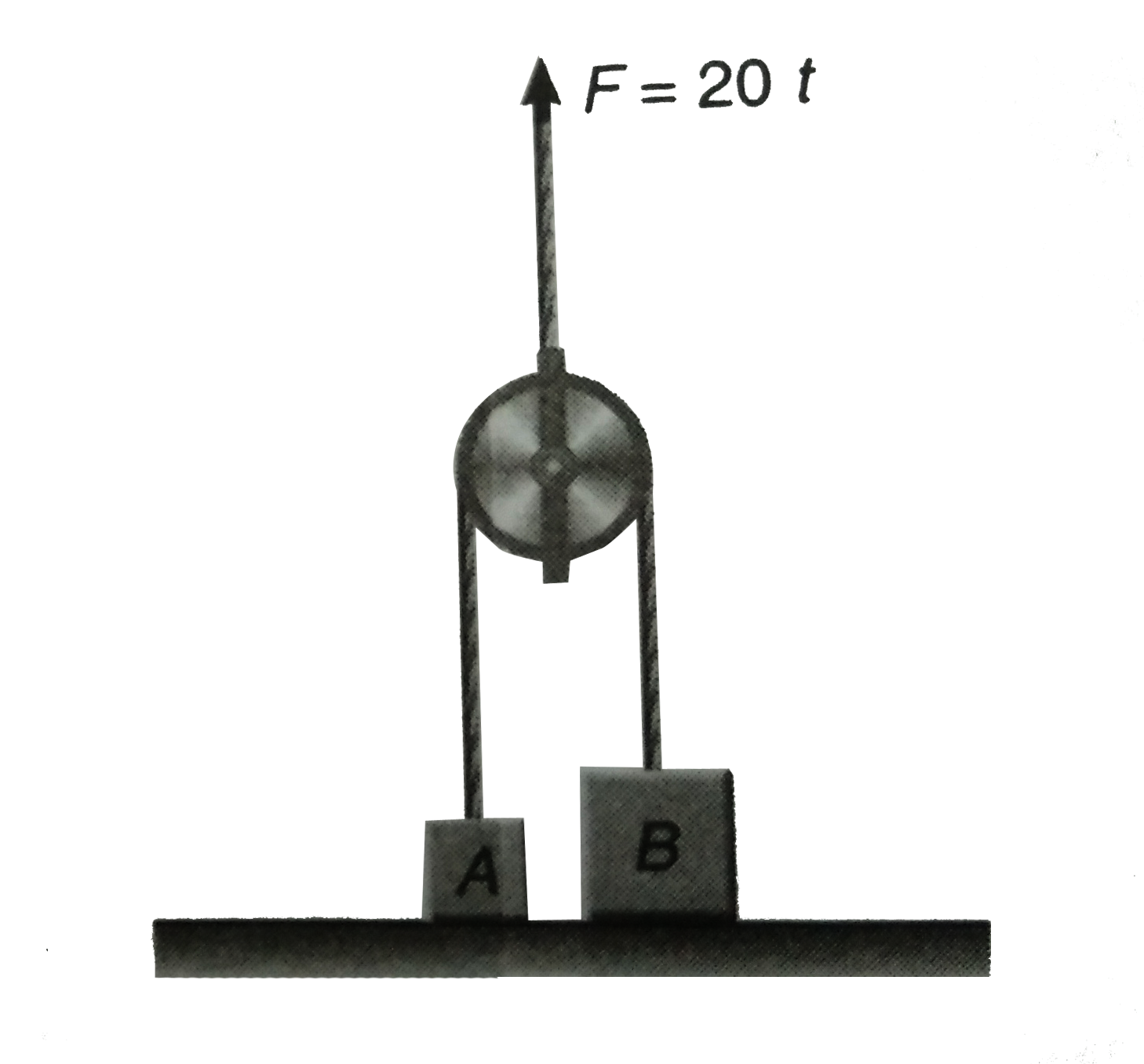
(a) velicity of `A` when `B` loses contact with the floor.
(b) height raised by the pulley upto that instant.
(Take =`g =10 m//s^(2))`
View SolutionFind the acceleration of the body of mass `m_(2)` in the arrangement shown in figure. If the mass`m_(2)` is `eta` time great as the mass `m_(1)` and the angle that the inclined plane forms with the horizontal is equal to `theta`. The masses of the pulley and threads, as well as the friction, are accumed to be negligible.
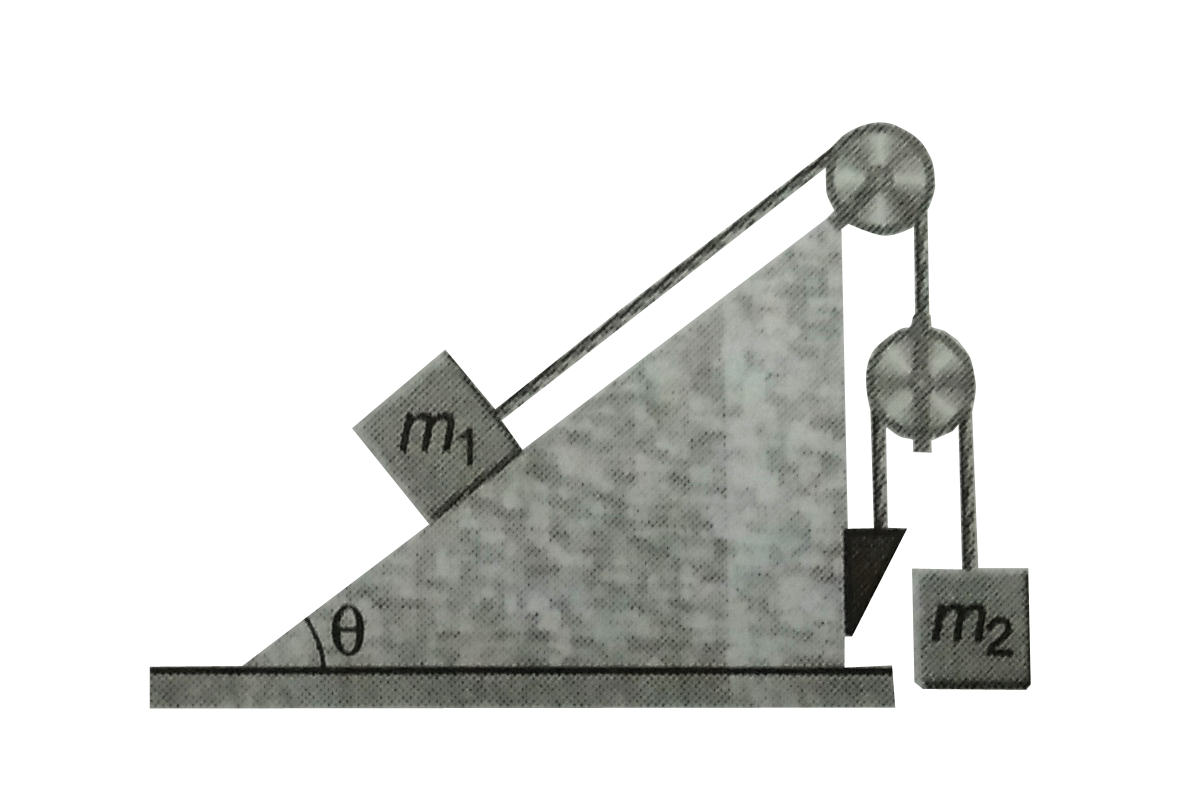
View SolutionIn the arrangement shown in figure the mass of the ball is `eta` times as that of the rod. The length of the rod is `L` the masses of the pulleys and the threats as well as the friction, are negligible. The ball is set on the same level as the lower and of the rod and then released. How soon will the ball be opposite the upper and of the rod?
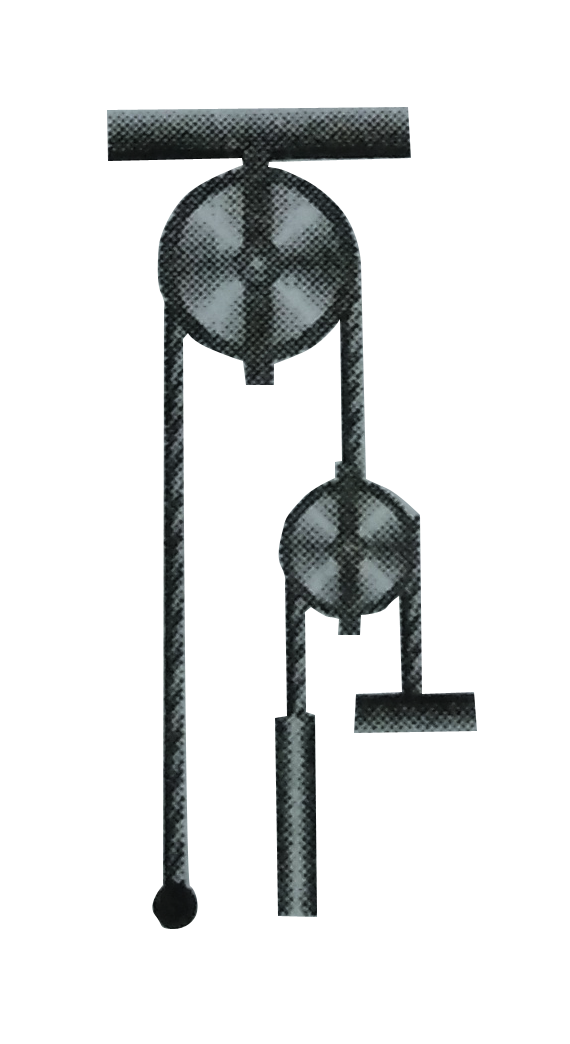
View SolutionFigure shown a small block `A` of mass `m` kept at the left end of `a` plank `B` of mass `M = 2m` and length `l` . The system can side on a horizontal rood. The system is started towards right with the initial velocity `v`. The friction coefficient between the rood and the plank is `1//2` and that between the plank and the block is `1//4` . Find

(a) the time elapsed before the block separates from the plank
(b) displacement of block and plank relative to ground till that moment.
View Solution
Miscellaneous Examples questions and complete solutions for chapter LAWS OF MOTION of DC PANDEY PHYSICS (HINGLISH) of Class 11
All Exercises from DC PANDEY Class 11 PHYSICS LAWS OF MOTION
- Chapter exercises (A) Taking it together
- Check point 5.1
- Check point 5.2
- Check point 5.3
- Check point 5.4
- Comprehension
- Exercise 8.1
- Exercise 8.2
- Exercise 8.3
- Exercise 8.4
- Exercise 8.5
- Match the columns
- Medical entrances gallery
- Miscellaneous Examples
- Objective Question
- Single Correct
- Solved Examples
- Subjective Question